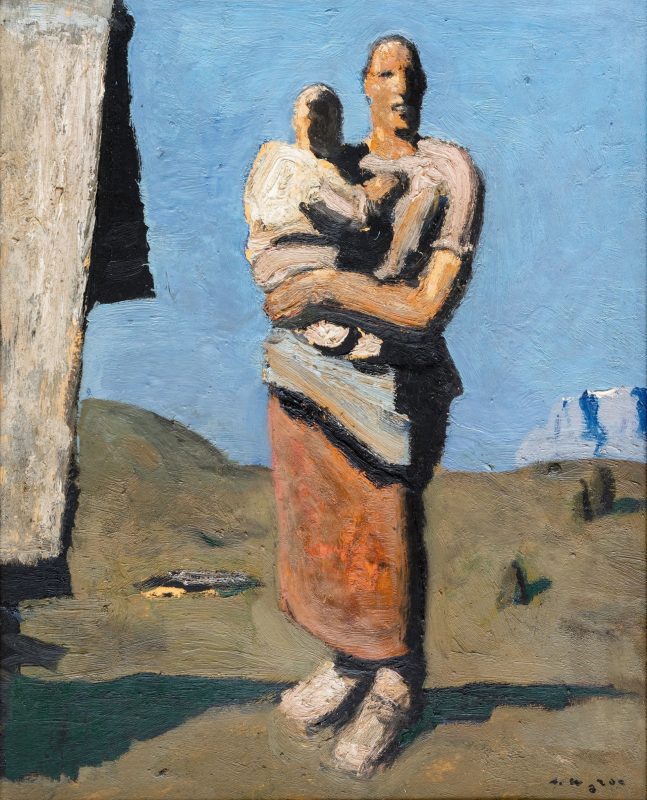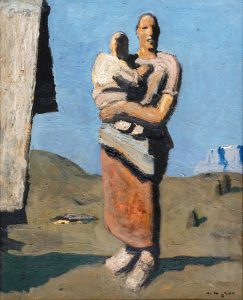1891 Oberndorf/Tyrol – 1958 Kitzbühel/Tyrol
- Title
- „Bauernmutter“ („Farmer Mother“)
- Time
- around 1928/30
- signed
- lower right: "A. Walde"
- Technique
- oil on cardboard
- Measurements
- 22½×18 in
Alfons Walde was born in 1891 in the picturesque village of Oberndorf (Kitzbühel district) at the foot of the “Wilder Kaiser” mountain range. He was to remain loyal to his Tyrolean homeland for the rest of his life and celebrate it, as well as its proud inhabitants, with his magnificent art. Walde only moved to Vienna for his studies from 1910 to 1914, where he studied architecture at the Imperial-Royal Technical University but focused on drawing courses and moved around the Vienna Secession and the Hagenbund. Walde was able to exhibit at the Vienna Secession for the first time as early as 1913.
His encounters with Gustav Klimt and Egon Schiele were particularly influential during his time in Vienna – he was also friends with the latter. Despite the many enriching influences, Walde himself said of his student years in 1932: “Through Schiele I also came to Klimt and his circle – but what was considered art there was a mystical matter for me and I soon felt that it was high time for me to come back to Tyrol.” After the First World War – in which he had served as a lieutenant in the “Kaiserschützen” regiment – Walde enrolled at the Technical University again in 1917, but soon decided to leave the big city behind and returned to Tyrol, where he settled in Kitzbühel.
Inspired by the rugged mountain landscape and the rural everyday life of its inhabitants, Walde created his preferred landscape and genre motifs in the 1920s and developed his unmistakable style influenced by the new objectivity. With his famous winter sports subjects, he made a significant contribution to Kitzbühel’s international reputation as a fashionable ski resort. The international public soon became an important buyer segment for the painter and Walde also enjoyed the multifaceted social life in his private life. Walde’s house on the “Hahnenkamm” mountain, which he had built in 1929 according to his own designs, became the center of artistic life in Kitzbühel.
The “Farmer Mother” (also known as the “Mountain Mother”) is one of the impressive motifs that Alfons Walde developed in Tyrol in the 1920s. It shows the monumental, full-length figure of a peasant woman with a child in her arms, which stands out clearly from the mountainous landscape in the background. The silhouette of mother and child is almost reminiscent of one of those wonderful Gothic Tyrolean Madonnas that the artist must have had the opportunity to admire in the churches of his homeland. The sculptor and lyricist Gustinus Ambrosi truly put it in a nutshell when he described Walde as a “sculptor of color and line”.
Alfons Walde presented an early variant of the pictorial theme of the “Bauernmutter” in spring at the 94th exhibition of the Association of Visual Artists at the Vienna Secession in 1927. The wintry subject is part of the important collection of the Leopold Museum (inv. no. 334). The present summer depiction from around 1928/30 was exhibited for many years in the Walde Museum in Kitzbühel.

